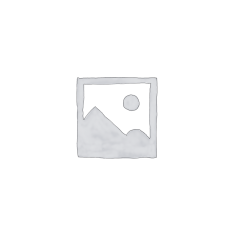Description
ABSTRACT
Handling of cargo has been a circular task all these while in our various ports. And Nigerian Ports Authority (N.P.A) being an organization responsible for seeing to the affairs of our various sea ports in Nigeria, have worked endlessly to make sure cargoes are properly handled without much complain of damage or misplacement.
To ease the operation of cargo handling in our sea ports, researcher took up this study by critically understanding the work, procedure involved, analysis of the various steps and at the same time detecting problem in the present system and designing a new system that has solution to the problem of the existing system.
The new design is computerized and is subject to modification at any given time. It also have this interaction feature and accurate in its output.
TABLE OF CONTENTS
COVER PAGE
TITLE PAGE
APPROVAL PAGE
DEDICATION
ACKNOWELDGEMENT
ABSTRACT
CHAPTER ONE
1.0 INTRODUCTION
1.1 BACKGROUND OF THE PROJECT
- PROBLEM STATEMENT
- PURPOSE OF THE PROJECT
- OBJECTIVE OF THE PROJECT
- SIGNIFICANCE OF THE PROJECT
- LIMITATION OF THE PROJECT
- DEFINITION OF TERMS
CHAPTER TWO
LITERATURE REVIEW
- REVIEW OF THE STUDY
CHAPTER THREE
3.0 DESCRIPTION AND ANALYSIS OF THE EXISTING SYSTEM
3.1 FACTS FINDING METHODS USED
3.2 INFORMATION FLOW
3.3 ORGANIZATIONAL STRUCTURE OF NPA
3.4 INPUT, PROCESS AND OUTPUT ANALYSIS
3.5 PROBLEMS OF THE EXISTING SYSTEM
3.6 OBJECTIVES OF THE EXISTING SYSTEM
3.7 JUSTIFICATION OF THE NEW SYSTEM
CHAPTER FOUR
- THE NEW SYSTEM DESIGN
- OUTPUT SPECIFICATION AND DESIGN
- INPUT SPECIFICATION AND DESIGN
- FILE DESIGN
- PROCEDURE CHART
- SYSTEM REQUIREMENTS
- IMPLEMENTATION
- PROGRAM DESIGN
- SOURCE PROGRAM
- DOCUMENTATION
- CHOICE OF LANGUAGE
- LOADING THE PROGRAM
- PROGRAM DESCRIPTION
CHAPTER FIVE
- CONCLUSION
- RECOMMENDATION
- REFERENCES
CHAPTER ONE
INTRODUCTION
Nigeria Ports Authority is a government owned organization under the supervision of the federal Ministry of transport with responsibility of providing specific ports and labor services for the country’s meantime industry.
One of their numerous duties and major functions is the provision of Cargo Handling Quays facilities. Right from the inception of this company, the billing system has been manually processed. The port complex is in the early stage of computerization and the manual method of preparing customers bills are delayed.
A computer-based billing system is necessary for handling and preparing of accurate bills for customers. The new system will facilitate the prompt preparation of bills, easy retrieval of information, security to vital information and resource sharing among the billing department.
- BACKGROUND OF STUDY:
Once Port complex is located near Port. Harcourt, Rivers State of Nigeria. The port is a natural port and was established about twenty years ago, firstly with the construction and commissioning of the Federal Lighter Terminal (FLT) in 1982 and later the Federal Ocean Terminal (FOT) in 1996.
These two terminals handle lighter (smaller) vessels and ocean-going vessels respectively. The average draught of FLT is about 5.7m while that of FOT is about 13.0m being the cheapest in the West and Central African sub-region. In this regard, the FOT is envisaged to be attracting more cargo ship and traffic not only as a transit but also as a transshipment center in the sub-region. It however did not have any mechanical handling equipment for billing.
The billing system is presently handling manually by the marketing department of this port. The marketing department of the port took over the function of revenue billing from the traffic department in the 80’s. their main function is to raise customer’s bills of all statutory charges against port users for the services rendered to them. These services includes Rental period at the number of days the consignment in within the port vicinity, NPA shore handling, transfer service, documentation, terminal delivery value added tax (VAT) and miscellaneous.
The role at which the bills are prepared with the increasing number of customer is insignificant. There are procedural ways in which these bills are being prepared. They are the provisional bills of vessels, the final bills of vessels and the miscellaneous bills. A staff has to raise as many bills as the number of the customer increases: more importantly, delays bring extra cost on the importer, and this makes the importer feel disappointed when they come to collect their raised bills.
Hence, a thorough investigation and analysis of the manual billing method enables me to gain understanding on the true nature of their problems and design a computerized seaport billing system that would bring solutions to the problem inherent.
- STATEMENT OF PROBLEM
History has it that the billing system in Nigeria Port Authority, one port has been plagues by several factors based on the current manual process by the use of the Draft import Debit and import Debit Note. These factors includes:
- Fills and records are not properly kept
- Errors are easily made and hardly detected
- A lot of time is wasted to prepare bills
- Information is not well documented
- Security of files or document is not granted.
- PURPOSE OF STUDY
The main aim of this study is to computerize Nigeria Ports Authority, Onne Port billing system in order to improve their transaction rate of services to their various customers.
- OBJECTIVE OF THE STUDY
The primary aim of this project research is to develop a computer-based seaport billing system that will handle the bills raised for various customers specifically in NPA, Onne Port. A computer –based system can be ‘batched’ or ‘interactive’. A batch processing system is one where transactions are accumulated into batches of suitable sizes, then each batch is sorted and processed as a simple unit. Batch processing has a degree of delay. Interactive system are those which allow the user to input data in response to the information displayed on the screen.
- LIMITATION OF THE STUDY
During the course of this project work, the researcher batted with time and money constraint which nearly affected the progress of the work. Despite all odds, the researcher was able to produce a defendable work.
- SIGNIFICANCE OF THE STUDY
The need for a study of this nature can not be over emphasized. It is expected that with the designed system, one can realize some important effects of the computerized billing system. Some of the effects are :-
- The chances of frauds of any kind will be drastically reduced as well as errors on customer’s bill.
- The new system saves time and facilitates the prompt raising of bills as delay brings on extra cost to customers.
- The information flow is well maintained and it enhances the top management decision making.
1.7 DEFINTION OF TERMS
- CONSIGNMENT: The same as the container of goods.
- CONSIGNEE: The same as importer of the container.
- GROUPAGE: When two or more importers come together to improve one or more containers.
- HARBOUR: This is a safe place where ships can be to load or unload.
- HARDWARE: Is all the physical devices around the computer.
- INTERACTIVE PROCESSING: A process where by the users communicates directly with the computer.
- PORT: It means the commercial area of the harbor at the part of the harbor used for loading and in loading of goods.
- QUATS: A stone or metal plate form in a harbor where boats/ships come in to load.
- SOFTWRE: All the programs in the computer.
- SYSTEM: This is a set of interrelated elements working together to form a unit to get some output.
- SYSTEM FLOWCHART: This is a diagrammatic representation of logical flow of development of a system through different stages or processes around the computer and its various task.
- TARIFF: Tax on a particular class of imported goods.
- TRANSFER CHARGE: The money paid for the services rendered by N.P.A in transferring the consignment from the ship to the port.
- VAT: Value Added Tax-tax on the value of a product at each stage of manufacture and marketing.
CHAPTER TWO
2.0 LITERATURE REVIEW
2.1 REVIEW OF THE STUDY
The existence of Billing system is not new in Nigeria and the global world in general. Many scholars have their different opinion on this concept, the need, and how the problems associated with it can be eradicated without delay. Also a considerable effort to the development of efficient computation methodologies for billing system has been equally made by a number of researcher.
According to Jean Paul, corensor (1984) on billing method researched on the various method of a business form. “ the company of Canada Ltd” which runs a chain of small departmental stores. The system developed was able to produce a listing of all credit card carrying customers, a monthly balance report, a daily sales report and monthly statement for all customer. The system was implemented using PL/1 and sequential access file were maintained due to the manner of processing required.


Reviews
There are no reviews yet.